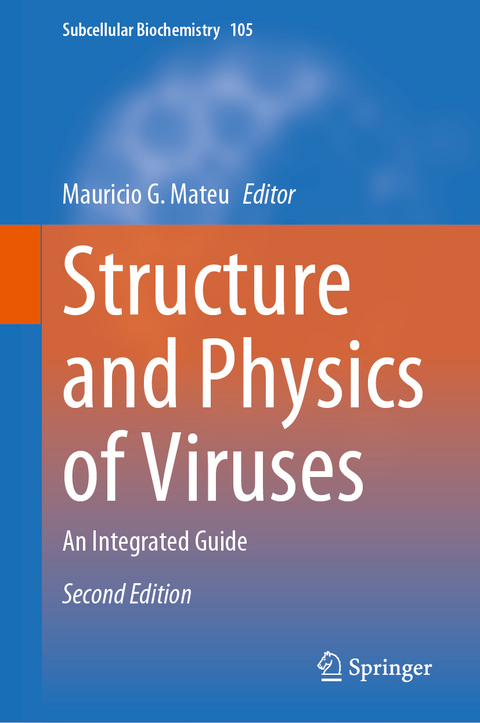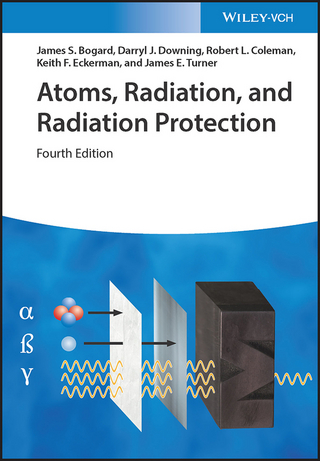
Structure and Physics of Viruses
Springer International Publishing (Verlag)
978-3-031-65186-1 (ISBN)
- Noch nicht erschienen - erscheint am 06.01.2025
- Versandkostenfrei innerhalb Deutschlands
- Auch auf Rechnung
- Verfügbarkeit in der Filiale vor Ort prüfen
- Artikel merken
The second edition of this book provides a completely updated account of the structure, dynamics, and physics of viral particles: from the moment they emerge by self-assembly from viral components produced in the infected cell, through their extracellular stage, until they recognize and infect a new host cell and cease to exist as they lose their physical integrity to initiate a new infectious cycle.
New insights into the structure of viruses, their physical properties, and mechanisms of action, derived from results obtained in the last decade, have been included, as well as other (bio)physical techniques to study the structure or dynamics of virus particles and components. These include, among many others, new advances in high-resolution electron cryomicroscopy; novel approaches in the use of electron cryotomography or the application of soft X-ray tomography to study viruses in the infected cell; high-speed atomic force microscopy to study virus assembly and dynamics; and the development of new antiviral drugs and vaccines. as well as of many nanomedical and nanotechnological applications of virus particles.
New chapters on the study of viruses inside infected cells and on technological applications of modified viral particles have been included in this second edition. The book is still aimed primarily at Master's students, Ph.D. students, and postdoctoral researchers with degrees in biology, chemistry, physics or related scientific disciplines who have an interest in or are working with viruses. It provides an up-to-date overview of many important concepts, techniques, studies and applications in structural and physical virology for specialized researchers working with viruses, regardless of their field of specialization, covering the latest research together with fundamental concepts and well-established facts.
In short, this book is basic enough to be used by undergraduate and Ph.D. students, but advanced and up-to-date enough for experienced scientists with an interest in structural and/or physical virology.
Mauricio G. Mateu is a Full Professor of Biochemistry and Molecular Biology at the Universidad Autonoma de Madrid (UAM), and a Group Leader at the Centro de Biología Molecular "Severo Ochoa" (Spanish Research Council-UAM). He combined training in biochemistry, molecular virology, and protein engineering in three prestigious laboratories, respectively led by Profs. Severo Ochoa and Esteban Domingo in Madrid, Spain, and Alan R. Fersht in Cambridge, UK, to establish a research line on the structural basis of virus function. His group uses protein engineering and biological, biochemical, and biophysical approaches, including atomic force microscopy, to understand the relationships between atomic structure, conformational stability and dynamics, physical properties, and biological function of viruses. His studies on viruses during the last 35 years have involved multidisciplinary and interdisciplinary collaborations with theoretical and condensed matter physicists, organic chemists, biochemists, structural biologists, biophysicists, and molecular virologists. He is the author of over 150 scientific publications, including over 110 original research articles.
Part I: The Viral Machine.- Chapter 1: Introduction, The Structural Basis of Virus Function.- Chapter 2: The Basic Architecture of Viruses.- Part II: Determination of the Structure, Dynamics and Physical Properties of Viruses.- Chapter 3: Conventional Electron Microscopy, Cryogenic Electron Microscopy and Cryogenic Electron Tomography of Viruses.- Chapter 4: X-Ray Crystallography of Viruses.- Chapter 5: Nuclear Magnetic Resonance Spectroscopy to study Virus Structure.- Chapter 6: Fluorescence, Circular Dichroism and Mass Spectrometry as Tools to Study Virus Structure.- Chapter 7: Integrative Approaches to Study Virus Structures.- Chapter 8: 3D Cryo-Correlative Methods to Study Virus Structure and Dynamics within Cells.- Chapter 9: Atomic Force Microscopy of Viruses.- Chapter 10: Optical Tweezers to Study Viruses.- Part III: Structural Foundations of Virus Properties and Functions.- Chapter 11: Assembly of Structurally Simple Icosahedral Viruses.- Chapter 12: Architecture and Assembly of Structurally Complex Viruses.- Chapter 13: Nucleic Acid Packaging in Viruses.- Chapter 14: Maturation of Viruses.- Chapter 15: Virus-Receptor Interactions and Receptor-Mediated Virus Entry into Host Cells.- Chapter 16: Entry of Enveloped Viruses into Host Cells: Membrane Fusion.- Chapter 17: Bacteriophage Receptor Recognition and Nucleic Acid Transfer.- Chapter 18: Mechanical Properties of Viruses.- Chapter 19: Theoretical Studies on Assembly, Physical Stability and Dynamics of Viruses.- Part IV: Applied Structural and Physical Virology.- Chapter 20: Antiviral Agents: Structural Basis of Action and Rational Design.- Chapter 21: Design of Novel Vaccines Based on Virus-Like Particles.- Chapter 22: Engineering and Bio/Nanotechnological Applications of Virus Particles.
| Erscheint lt. Verlag | 6.1.2025 |
|---|---|
| Reihe/Serie | Subcellular Biochemistry |
| Zusatzinfo | XX, 780 p. 80 illus. |
| Verlagsort | Cham |
| Sprache | englisch |
| Maße | 155 x 235 mm |
| Themenwelt | Naturwissenschaften ► Physik / Astronomie ► Angewandte Physik |
| Schlagworte | Nucleic Acid Packaging • Physical Virology • Viral Infection • Virus Architecture • Virus Function • Virus Properties • virus structure |
| ISBN-10 | 3-031-65186-3 / 3031651863 |
| ISBN-13 | 978-3-031-65186-1 / 9783031651861 |
| Zustand | Neuware |
| Haben Sie eine Frage zum Produkt? |
aus dem Bereich


